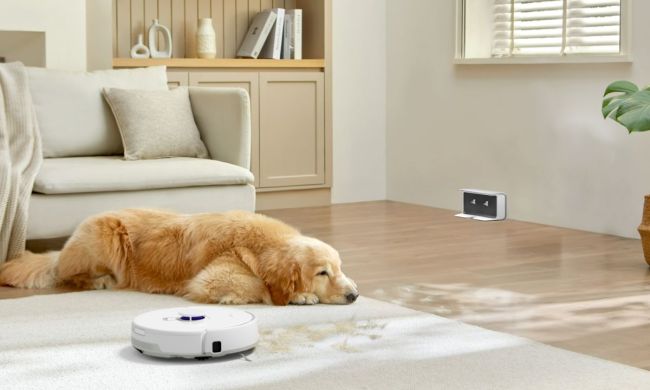Smart homes saw more use and more growth than ever before in 2020. When the mandated lockdowns began, people spent more time in their homes than they ever had, which led to a surge in devices and technology to make the home more comfortable and user-friendly. Home became more than a place to relax: it became the place you slept, the place you worked, and the place you spent your leisure time.
Lockdowns drove smart home growth
At the start of 2020, experts and analysts predicted a lot of changes in the smart home market; no one predicted COVID-19 and its effect on the planet at large. That said, many of the predictions about the market came true. Smart homes became smarter thanks to machine learning. The market became more widespread and saturated. More people than ever have robots in the home — in the form of a robot vacuum or mop, anyway. We’re not at the point of robotic butlers just yet.
Interest in the smart home grew, too. A look at this Google Trends search shows that traffic for smart home spiked in the last weeks of April — coincidentally about the time people had been stuck in their homes for a month. While the interest dropped off a bit over time, it has remained consistently higher this year than it was before the lockdown.

This is even more apparent when you take a look at robot vacuums. Interest reached a point just after the end of April, then remained steadily higher until it began spiking in the fall of 2020.

Although hard sales numbers are not available, a market research report published in September of 2020 predicts the smart home industry as a whole will generate revenue of $96.2 billion by 2030, with an average annual growth rate of 26.2% year over year. To put it in perspective, the industry generated $8.7 in 2019. The report concluded its findings by suggesting the reason the industry grew the way it did is due to an overall increase in IoT devices, but also an increase in chronic diseases.
The unintended appeal of being stuck at home
It was a bit of a revolutionary year for many reasons, but a pandemic in the modern era defined it. People became infinitely conscious of their health and the health of others. Just cough in public and notice the looks you’ll get.
The health-conscious turned to smart home technology for help. Connected smart scales made it easier to monitor weight and BMI. Smartwatches helped people keep an eye on their heart rates — and helped with contact-tracing once the technology rolled out. The main area where smart home growth excelled, however, was in smart air purifiers and smart vacuums.
Air purifiers pushed the envelope this year with a focus on killing bacteria and viruses. While the verdict is still out on whether an air purifier makes any difference in viral counts, cleaner air is easier to breathe. During a time when breathing problems are the main concern, cleaner air is always valuable. Smart robot vacuums also resulted in cleaner air by keeping the floors free of dust and allergens, day after day.

Robot vacs also provide another benefit: If you’re stuck at home, you want your home to be clean, but you might not want to vacuum yourself. A robot vacuum that runs on a set schedule takes the chore out of keeping the floor clean.
How work from home influenced growth
With so many jobs moving to the comfort of a home office, many people found use in smart assistants and smart lighting. Numerous studies showed the benefits of changing the color and temperature of your smart lights to help improve focus. Smart assistants made it easy to ask for information, receive a morning brief on the news, and more.
Smart assistants are often the first interaction with a smart home people experience, and they act as a sort of gateway device. Once someone invests in a smart assistant, it’s likely they will later invest in more smart home technology.
Changes in the kitchen mattered, too. Near the start of the pandemic, many restaurants shut down. People used to takeout could no longer get their favorite foods, so they turned to smart kitchen accessories to help. Air fryers, smart ovens, and other devices took the guesswork out of the kitchen and helped the culinarily-challenged make delicious meals.
As a result of all the lifestyle changes people made during 2020, their relationship with technology changed. Lifestyles became intertwined with tech. Smart scales, smart assistants, smart lights — they all work together to help those that are more health- and productivity-focused.



